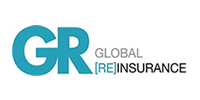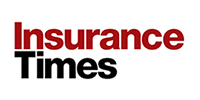Chief underwriting officer explains ‘twofold’ strategy for 2026, which will see the hybrid fronting firm add new UK MGAs to its roster alongside a European expansion
London-headquartered hybrid fronting business Bridgehaven plans to boost its UK MGA footprint and expand its operations into Europe for 2026, with its chief underwriting officer Paul Dilley noting that the firm has not even “scratched the surface [of] where we can go” yet.
Bridgehaven launched in the UK in July 2023, offering a model that “is about marrying appetite of reinsurers to MGAs”. This works by Bridgehaven backing MGAs with its own capacity, however the firm only retains around 10% to 20% of this risk, with the remainder being passed on to reinsurers’ plates.

Speaking exclusively to Insurance Times, Dilley observes that Bridgehaven’s approach has reaped rewards so far – the business has onboarded 15 MGAs to date using its fronting model, covering a “broad church” of niches such as personal lines, specialty covers and reinsurance.
Furthermore, Bridgehaven’s UK operation – currently manned by 28 staff – will handle around £500m gross written premium (GWP) by year-end, with three additional MGAs set to finalise their partnerships with the firm in 2025’s fourth quarter.
Dilley confirms that Bridgehaven has no intention of standing still come 2026, with the fronting insurer not only planning to boost its UK volume in the MGA arena, but also looking to kickstart a country by country expansion into Europe.
He says: “We’ve made fantastic progress in the first 18 months in terms of [growing our] proposition out. But we haven’t scratched the surface [of] where we can go. We want to continue to do that.”
Strategic UK growth
In the UK, Dilley says that now Bridgehaven has a critical mass of MGAs on its roster, the upcoming “new phase” for the firm will be to “help our existing MGAs grow, achieve their plans and deliver profitability”.
He continues: “We also want to help bring in new teams or new product lines to our existing MGAs. We want MGAs with multiple contracts because that then allows them to grow through [market cycles].
“If you’ve got an MGA that only excels in a hard market, it doesn’t give you that longevity. The question [for MGAs is] how are you going to manage the [market] cycle?
“[The answer could lie in the] diversification of products and bringing different teams in, [or] riding the premium volume out and not necessarily going for growth year on year.
“The question we’re asking [our MGAs is] how are you going to grow profitably in an environment that’s softening?”
Alongside nurturing these MGAs already in the Bridgehaven family, Dilley adds that the insurer wants to grow further by “onboarding new MGAs in the UK that are complementary to what we’ve got” – as a ballpark figure, Bridgehaven is hoping to add around seven or eight MGAs a year to its book from 2026, Dilley confirms.
“We want to see distribution and MGAs that complement each other rather than conflict against each other,” he says.
Developing a European footprint
Bridgehaven’s growth plans are not just restricted to locales flying the Union Jack, however.
Read: MGA partners with specialty insurer to launch E&O underwriting practice
Read: Pen Underwriting strikes PI capacity partnership to support UK solicitors
Explore more insurer related content here, or discover more news here
The insurer has firm intentions to branch out into Europe in 2026 using a country by country roll out method and building on Bridgehaven’s acquisition of Dublin-based insurer SureStone Insurance DAC in July 2025.
Dilley explains: “It will be the same underwriting appetite in terms of scale, capability, credibility and the alignment element, but it will be a country by country roll out. Europe is a fantastic opportunity for us. Some of our existing MGAs have the desire and the capability to operate in Europe, so we can build that.”
Initially, Bridgehaven will start its roll out agenda in the European countries that also have a strong MGA appetite and infrastructure, as well as firm connections to the London market – such as Holland.
This is because Dilley is keen for Bridgehaven to take a measured stance to its growth agenda across the Channel – he is very cognisant of some of the challenges the insurer might face.
“We just need to make sure that we execute and don’t look at too many shiny things,” he says.
“Each country is different. Customs [are] different, the regulations are different. We need the ability to be a European business, speak their language, that sort of stuff.
“For us, taking Bridgehaven to Europe is a challenge in terms of understanding the market, but [also] actually behaving like [a] European business as well.
“Each country in Europe has a different appetite for MGAs. Some of the countries in Europe don’t have MGAs and others do. [In some countries,] a broker with a binding authority will be classified [as] an MGA, so we need to understand which ones are really MGAs.”
Bridgehaven’s “phased” European growth, therefore, will centre around establishing “trading links with London and building out on that” before developing “new relationships” in “eastern Europe” – Dilley describes this step as “phase two” once Bridgehaven is “comfortable on the subject matter we’re writing and can offer credibility around delivering the underlying result”.

Ultimately, Dilley wants Bridgehaven’s European operations to maintain the same seven to eight MGAs a year onboarding rate as the UK and he expects this part of the business to handle around £100m GWP by the end of 2026.
Providing ‘transparency’
Dilley believes Bridgehaven’s fronting model that taps into reinsurance backing to support MGA capacity is still a rarity in today’s UK general insurance market.
For him, Bridgehaven’s approach provides “a huge empowerment to [MGAs]” that very much takes advantage of how the MGA market as a whole has evolved over recent years.
Dilley explains: “Our model is all about giving transparency to the MGA and the ownership, saying ‘this is your capital base’. And what you can also then do is bring in additional reinsurance partners to start blending risk appetite.
“The MGA market has evolved. MGAs have been around for many years, particularly in the UK. Historically, there wasn’t necessarily an alignment of outcomes. So, if the MGA made money, they were reimbursed by commission, not the link to profitability. You saw a mismatch where an MGA could make a profit and the underwriter make a loss.
“What you’ve seen in the last 10 years, however, is alignment. So, where [there is] alignment to the underwriting outcomes and where you have that alignment [across] all three parties – the MGA, ourselves and our reinsurers – you become trusted partners of each other.”

Since joining Insurance Times, Katie has successfully obtained a number of industry accolades. Most recently, at Biba's 2025 Journalist and Media Awards, Katie was named the overall winner and received the Journalist of the Year trophy, alongside the Best Thought Leadership Award for her briefing article on reproductive health MGA Juniper and how insurance can be used to positively impact taboo subjects.View full Profile
Hosted by comedian and actor Tom Allen, 34 Gold, 23 Silver and 22 Bronze awards were handed out across an amazing 34 categories recognising brilliance and innovation right across the breadth of UK general insurance.























































No comments yet